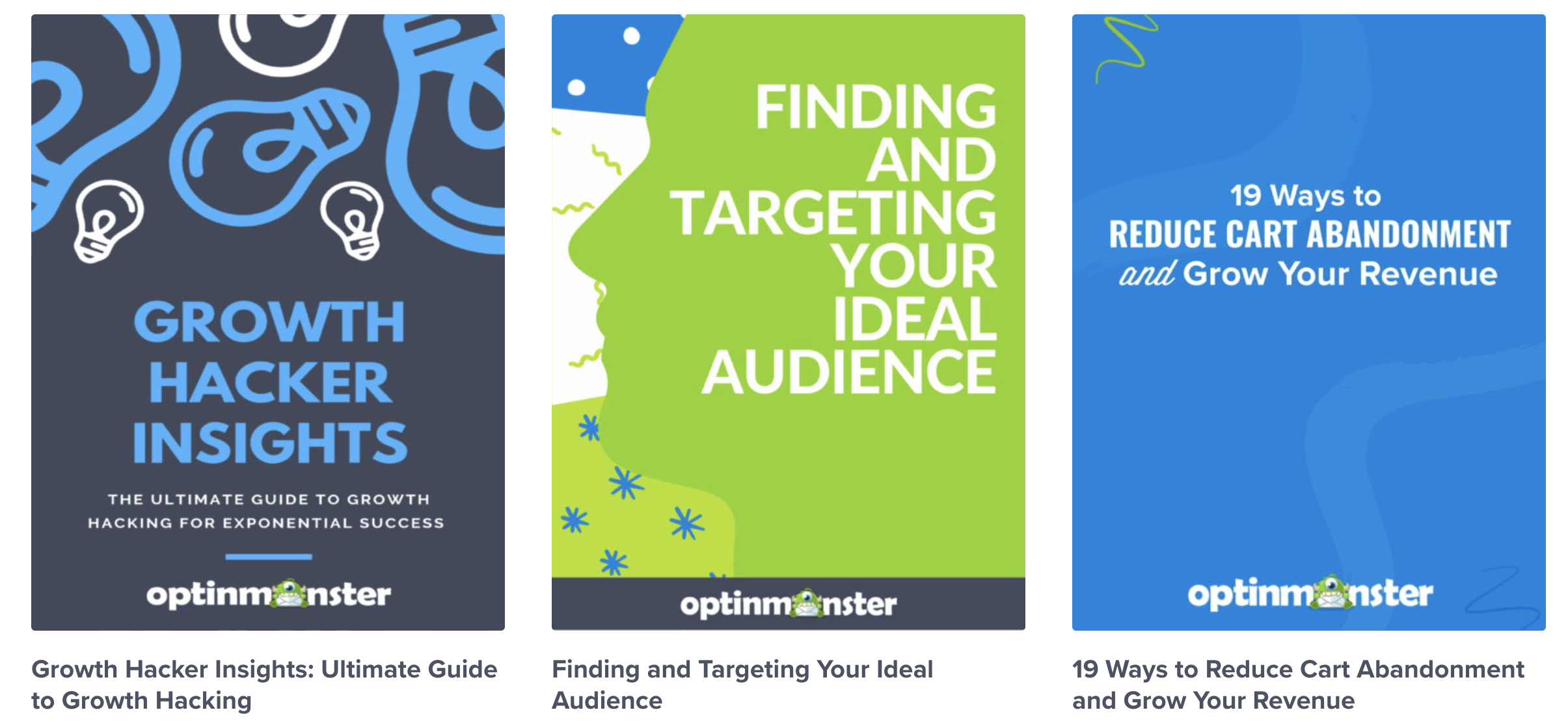You’ve probably heard this before, but the content is king when it comes to turning informed consumers into customers. But what you probably didn’t know is that a whopping 71% of B2B buyers consume blog content during their buying journey. In fact, 69% of marketers say content is superior to direct mail and PR. And all this while, you thought Shopify app marketing strategy didn’t need content.
Blogs. Infographics. Videos. Social media posts. Newsletters. Case studies. And so many other formats that a typical internet user consumes today. So what content formats and just how many of these pieces does your Shopify app marketing strategy really need?
Well, while there’s no one-size-fits-all approach here, here’s what I have learned experimenting with content for Shopify apps.
The type of content you need is directly dependent on what stage in the buying cycle your target merchant is. Now how much content you need of each format depends on what stage you’re trying to address and what your competition looks like.
The Shopify smart content funnel lays it out pretty clearly:

That’s a whole lot of content and definitely way too many formats. Didn’t I just talk about not having to do so much and focusing on what your merchants really need?
You’re right. The above funnel gives you an idea of what type of content works at what stage. Based on what your Shopify app enables, the content that works for you will vary. This is because of two reasons – your industry and how your target merchants look for solutions in the said industry.
Choosing the right content format for Shopify app marketing
Each content format comes with its own set of pros and cons. Take, for instance, a video can bring you higher engagement on social media. But it is a content format that doesn’t just take time, but also eats into a lot of your resources to create – be it in-house or outsourced. That’s why you need to document the answers to these before you start creating content of any format:
- Who is your target audience?
- What kind of content does your audience consume more?
- What kind of information do you want to share with your audience – statistics, how-tos, etc?
- What kind of resources do you have for content marketing (time and money included)?
- Will you be able to create content in-house or will you need to outsource it?
The above answers will help you prioritize which content formats you can get started with for your Shopify app marketing. But the successful Shopify apps are those that mix up things and produce content in different formats.
Using different formats of content, they don’t just stay ahead of their competitors by continually understanding what their target merchants need, but also keep their audience interested in ‘what’s next’.
A good practice is to first shortlist the content formats you can create based on your resources and then use the content marketing matrix. Fit the different content formats into the category they serve for your audience – entertain, inspire, educate, convince. This will help you estimate the frequency of content creation you need for making the most of your Shopify app marketing. But then again, always test, measure and optimize!

By creating the content formats that your target merchants are more likely to consume, you can do the following:
- Build awareness around your Shopify app
- Educate the merchants around a problem they face (and your solve)
- Offer an end to end solution to the above-mentioned problem (yours subtly included)
- Keep merchants engaged and boost your loyalty
- Show you’re an authority on the subject
- Reduce churn rate!
What content has proven to work for Shopify app marketing?
From Shopify apps that are bootstrapped to those who are just about to launch their product in the App Store, to those that have enough resources to use paid campaigns to promote themselves, these content formats that have proven to work:
1. Blogs
Content written around the industry your Shopify app is in, the challenges merchants are facing as of today, and the use cases it serves is a great way to build awareness and even nurture merchants into becoming customers of your Shopify app. A good strategy here is to consider long-tail and LSI keywords when creating your content calendar – it gives you an idea of what merchants are really looking for.
Take, for example, the ReferralCandy blog. Despite being a product that enables referral programs, they use the platform to share topics that are relevant to their target audience and help them achieve their goals, but in the end, also theirs!

2. Videos
About 54% of consumers prefer content in video format for the simple reason that it is more engaging, and is easy to consume. You can use this content format to create how-to guides around your product or to highlight different use cases, and how other merchants are using the app.
I’ll give you an example. We all know how tough setting up ads can be and retargeting is a different ball game altogether. Shoelace actually makes it easier for Shopify merchants to set up retargeting ads and they explain that with a quick video:
Or how PushOwl promotes web push notifications through a video case study with a Shopify merchant, HeadPhone Zone:
In fact, I really like how OptinMonster uses video content to showcase different use cases. Here’s one that shows how their app helps your content convert:
Smart, right?
3. Infographics
If you’re someone who has been digging deep into the industry trends and have valuable information in terms of statistics to share with merchants, this is the best format. Compared to long-form reports and whitepapers, infographics are a great way to share information and takeaways with merchants.
Unbounce is a good example here. They focus on creating infographics around topics they can contribute to the most – not only in terms of their design resources and interesting copy but industry statistics that come from years of working with different companies.

4. Social media posts
Shopify has an active following on social media platforms like Facebook and Instagram. That only goes to say how merchants are already on these platforms, waiting for and engaging with updates shared by Shopify. Use the same behavior to drive attention to your app.
Create meaningful posts around statistics merchants should know about their target markets. Or share hacks and industry best practices and details on how to use a feature of your product. This can help you drive higher installs and boost your app’s stickiness.
Here’s how PushOwl used an Instagram post to walk merchants through how they can create perfect web push notification campaigns:

5. Ebooks/ Guides
While the attention span of internet users is decreasing by the day and they’re constantly on the lookout for quick-to-consume content, the truth is they are also information-mongers. The more they get, the better it is. That’s where this long-form content format comes into play.
Ebooks and guides are a great way to establish your Shopify app’s authority in the industry. They offer you an opportunity to dive deep into a topic, walking the merchant step-by-step towards achieving their goals.
For example, Optinmonster creates ebooks/ guides for merchants across the funnel. Right from topics that will help merchants identify who their target shoppers are to those that involve using their product, their resource library covers it all. But of course, you can always begin with what you do specifically and then diversify the content buckets you cover.

6. Checklists
Another consumable format that Shopify merchants love to use are checklists that help them achieve a set goal. For example, with BFCM coming soon, checklists like the BFCM Toolbox by Shopify, are going to be the most used – you can use this opportunity to not just promote your app to the merchants, but also plugin your partners.
If you can’t create a separate landing page for a checklist, you can also turn it into an infographic format like Plobal Apps did to help Shopify merchants choose the right apps:

7. Online communities and forums
Participating in groups that your target merchants are a part of, give you the opportunity to start a conversation with them in a timely manner. By being non-salesy and helpful, answering relevant threads on platforms like Quora, Reddit, Facebook, and LinkedIn groups, you can promote your Shopify app effectively.
Apart from being able to reach merchants in a relevant way, you will also stumble upon partnership opportunities by being a part of active communities and groups. Here are a few Shopify groups that you absolutely need to join:
- Shopify Entrepreneurs
- Shopify Newbies
- Shopify eCommerce Group
- eCommerce and Shopify Pirates
- Shopify Startups
- eCommerce Experts
8. Email newsletters
About 40% of B2B marketers say that email newsletters are critical to their Shopify app marketing success. When you think about it, the reason is pretty obvious – emails give you the opportunity to talk one-on-one with your existing customers, target merchants, and subscribers. It helps your message stand out by giving it a noise-free platform – there are no social media posts that you’re competing with and no search engine ranking struggles.
Not convinced yet? Here are the email marketing statistics you need to know.
You can use this content format to turn subscribers into customers with smart nurturing. But most importantly, you can use these newsletters to keep your existing customers from churning out. Use the opportunity to showcase the best of your product features, how the merchant benefits from it, your best blogs and actionables that will help the merchant grow.
Pro tip: If you want to acquire more customers through email newsletters, make it a part of your co-marketing activities with your partners. A simple feature exchange in each other’s newsletters can go a long way in introducing apps to a pre-qualified audience that is more likely to convert. I’ll be writing more about co-marketing in an upcoming post. Subscribe to be notified!
Also read: A definitive guide to B2B email marketing
And of course, the one content format that you can’t go wrong investing in…
9. Case studies
Probably the simplest content piece to create, but the toughest when it comes to putting together are case studies. These are like the proof that your Shopify app can deliver the results it promises and how merchants are using it to achieve different goals.
In this piece, you don’t just share how the merchant used your app, but also the results they achieved from it. So obviously, it requires you to reach out to the merchants to ask for permission to share their performance data.
To make things simpler, here are a few templates to request case studies:
- Case study request template by Boast.io
- Case study request template by Sitepoint
And what should your case study include for effective Shopify app marketing?
- About the merchant
- The challenge the merchant faced
- The solution you offered
- The results
- Testimonial from the merchant
- And of course, wherever possible, graphics and screenshots to support the case
Now the good thing about this content format is that you can use it for two purposes – one, for social proof and second, for lead generation. Smile.io does this brilliantly!

They openly share the case study results and testimonials from merchants using their app. But for those who want to know more, they need to sign up to receive the ebook. So while they’re converting more merchants, they are also smartly building their email list.
Using content for Shopify app marketing
Similar to other marketing tactics and channels, getting success with content doesn’t come easy. While for some Shopify apps the very first content piece they create becomes a hit, there are others that have to try and test different formats and publish tens of content pieces to finally see results coming in.
But in both cases, one thing is set – if you know who your target merchants are, what they are looking for and you remain consistent at creating content that helps them achieve their goals, success is sure to come your way.
To give you a little more direction to use content for Shopify app marketing, here are a few additional reads:
- Five reasons why B2B companies need to use content marketing
- The why and how of creating customer-centric content
- How to create content for both users and the search engines
- The future of content marketing lies in distribution and syndication
- Shopify app marketing strategies to 10x your installs
Not sure if content marketing will boost your Shopify app marketing strategy?
Want to leverage customer psychology of wanting more information that leads to driving more installs for your Shopify app?
Let’s connect!





